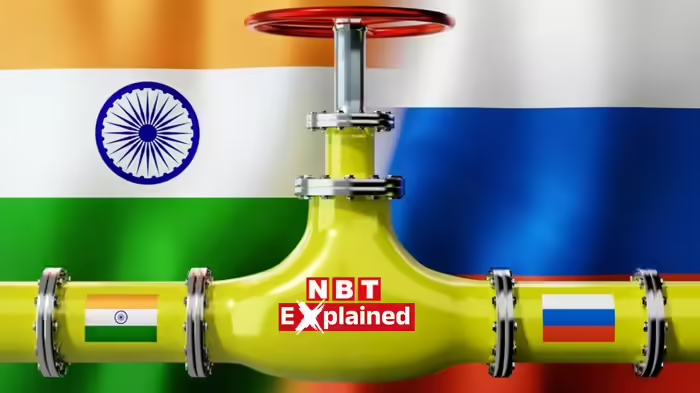
With Russian President Vladimir Putin expected to visit India soon, Moscow is preparing — even before the summit — a strategic move with India and China that could deliver a significant blow to US influence in global trade.
India–Russia Maritime Cooperation Gains Momentum
On 18 November, Nikolai Patrushev, Chairman of the Russian Maritime Board and a top aide to President Putin, met Prime Minister Narendra Modi in New Delhi to finalize preparations for the 23rd Annual India–Russia Summit scheduled for early December.
Putin last visited India in December 2021 for the 21st edition of the summit. During his upcoming visit, both nations are expected to strengthen a major new pillar of strategic partnership — joint shipbuilding, alongside cooperation in defence, space, and nuclear energy. India and Russia have already set a target of USD 100 billion in bilateral trade by 2030.
After the meeting, PM Modi wrote on social media that he had “meaningful discussions” with Patrushev on maritime cooperation, highlighting new opportunities in connectivity, skill development, shipbuilding, and the blue economy.
What India and Russia Are Negotiating
According to reports, India and Russia are working to boost trade by jointly developing:
- The Eastern Maritime Corridor (EMC)
- The Northern Sea Route (NSR)
This includes investments in port infrastructure, joint shipbuilding projects, and the construction of ice-class oil tankers essential for navigating frozen Arctic waters. Russia has also proposed training Indian crews to operate safely in icy Arctic conditions.
Eastern Maritime Corridor (EMC): A Game Changer
Also known as the Chennai–Vladivostok Sea Route, the EMC spans 10,300 km and directly links Indian and Russian ports. The corridor connects India to the NSR, enabling:
- Transit time reduction from 40 days (via Suez Canal) to approximately 24 days
- Bypassing congested chokepoints
- Avoiding geopolitically sensitive West Asian routes
The proposal was first made during PM Modi’s visit to Vladivostok in 2019. Its importance surged after India–Russia trade jumped over 200% in early 2024. The corridor became operational in 2024.
Northern Sea Route (NSR): Shorter, Faster, Cheaper
Stretching 5,600 km across the Arctic Ocean—from Russia’s Murmansk to the Bering Strait near Alaska—the NSR is 40% shorter than the Suez Canal route. Though challenging due to Arctic ice, melting sea ice and Russia’s strong icebreaker fleet are making it increasingly viable.
Key benefits of NSR:
- Significant reduction in shipping cost
- Cheaper transport of Russian crude oil, LNG, and coal to major Asian consumers like India and China
- Current cargo volume: 35–40 million tonnes annually
- Russia’s targets: 80 million tonnes by 2025, 200 million tonnes by 2031
India’s Role in Arctic Shipbuilding
Russia seeks global partners to transform the NSR into a major international shipping corridor. This includes co-developing:
- Nuclear and diesel-powered icebreakers
- Ice-class cargo ships
India has been offered collaboration opportunities in shipbuilding, and discussions are underway to jointly manufacture non-nuclear icebreakers at Indian shipyards.
Impact on Global Geopolitics
The EMC–NSR combination is expected to:
- Reduce dependence on US-influenced maritime routes
- Bypass Western trade restrictions
- Lower the cost of Russian imports for India
- Strengthen the India–Russia strategic partnership
- Shift Asia’s trade balance away from the West
During the Global Maritime India Summit 2023 in Mumbai, Russia formally invited India to participate in the NSR — an offer that has rapidly gained traction.
As President Putin prepares for his India visit, the emerging India–Russia–China maritime axis could significantly alter global shipping routes — and deliver a strategic jolt to US dominance in global trade.
Discover more from SD NEWS agency
Subscribe to get the latest posts sent to your email.